| Designation: | AMOS |
 |
|---|---|---|
| Manufacturer: | Patria Vammas Oy | |
| Product type: | Turrets | |
| Name: | Mortar turret |
AMOS®, "Advanced MOrtar System", is a double barreled breech-loading 120 mm mortar turret designed to be mounted on wheeled or tracked APC chassis and on fast combat boats. It is able to operate autonomously with impressive firepower, including direct and indirect fire capability together with Multiple Rounds Simultaneous Impact (MRSI), up to a range of 10 km.
Due to turret mounting AMOS has a full 360-degree field of fire at elevations between -3 to +85 degrees. Thus, AMOS is capable of both direct fire for self-protection and conventional indirect fire.
Ammo used in AMOS is conventional smooth bore mortar 120 mm fin-stabilised ammunition with a short stub case added. Special ammo, e.g. cargo and Strix ammunition, can also be used.
The turret armour and APC chassis provide protection for crew against infantry weapons fire, artillery shell fragments and NBC weapons.
AMOS crew normally consists of four men: driver, commander, gunner and loader. Of these, commander and gunner are seated in the turret.
Thanks to its electronic equipment AMOS is capable of fully independent operation, but traditional opto-mechanical aiming methods are retained as back up.
Patria Hagglunds is responsible for co-ordination of the further development and international marketing of the AMOS new generation mortar system.
- High rate of fire due to double barrel concept
- Direct fire capability
- Rapid deployment due to instrumentation for vehicle location and attitude; well suited for shoot & scoot tactics
- Ballistic protection against infantry weapons and splinters
- Muzzle blast and NBC protection
- Low chassis loads due to recoiling mechanism; suitability for both wheeled and tracked chassis
- Suitability for all standard 120 smoothbore mortar ammunition as well as smart guided ammunition
- Full 360° traverse without limitations due to turret mounting and recoil mechanism
In June 1996, Hägglunds Vehicle (which today is BAE Systems Hägglunds and Patria Weapon Systems) of Finland signed an agreement to develop a new turret-mounted twin 120 mm smoothbore mortar system called AMOS (Advanced Mortar System).
The now BAE Systems Hägglunds has considerable experience in the design, development and production of tracked vehicles and turrets, while Patria Weapon Systems has developed and produced a complete range of mortar systems and their associated ammunition.
Under the terms of the agreement, BAE Systems Hägglunds is responsible for the turret with Patria Weapon Systems responsible for the twin 120 mm smoothbore mortar system.
Two versions of the AMOS 120 mm self-propelled mortar system were originally developed: Model A muzzle loaded and Model B, breech loaded. A decision was subsequently taken to concentrate all work on the breech-loaded version.
AMOS has two breech-loaded mortars, each of which is 3 m long. The barrels are mounted in a common cradle but in this case both of them have a hydraulic recoil brake and pneumatic recuperator of their own, thus enabling each barrel to recoil independently.
Each barrel is fitted with a fume extractor to keep toxic gases inside the vehicle within acceptable levels.
The breech system is a vertical downward-opening wedge type which is operated by a toggle link-type semi-automatic mechanism. Breech obturation and positive shell positioning is achieved by means of a special reusable stub case adapted to each projectile.
Each barrel is provided with a revolver-type projectile feeder, although for the prototype stage loading is manual by means of a loading tray.
The first breech-loaded example was completed in 1997 and was shown for the first time in June of that year.
The turret is of all-welded steel armour construction which provides protection from small arms fire and shell splinters. It also provides muzzle blast and NBC protection for the turret crew of two. Turret traverse and weapon elevation is all electric, with manual controls being provided as a back-up for emergency use.
A wide range of fire-control options is available, depending on user requirements.
The prototype system had an optical laying system but growth potential could include an automatic loading system and an electronic fire-control system.
Ammunition load would depend on the chassis but typically would be 50 conventional mortar bombs (for example HE, smoke and illuminating) and six guided mortar bombs (for example the Swedish Strix). Ammunition resupply would take 10 minutes.
As well as the BAE Systems Hägglunds CV90 full-tracked chassis, the AMOS 120 mm mortar system could be fitted to a wide range of other chassis including the Russian MT-LB multipurpose tracked armoured vehicle (used in some numbers by Finland and Sweden), the now BAE Systems, Ground Systems M113 series tracked vehicle and the Swiss MOWAG Piranha (8 × 8) light armoured vehicle.
In mid-1999 the Finnish Defence Force awarded the company a contract worth EUR4.5 million for the twin 120 mm AMOS. This contract covered the delivery to the Finnish Army of a study of some aspects of AMOS, including the loading system.
It also covered the supply of one complete AMOS installed on a Patria Vehicles XA-203 (6 × 6) chassis.
In the first quarter of 2000, the Swedish Defence Materiel Administration (FMV) and its Finnish counterpart signed a project agreement for the development of the vehicle-based twin 120 mm AMOS (Advanced Mortar System).
This agreement is based on a 1994 agreement signed between Denmark, Finland, Norway and Sweden for the joint development of material to meet the operational requirement of all four countries. For the AMOS project Denmark and Norway have observer status.
The new agreement covered a study and prototype phase that ran through to December 2002 with a total value of SEK100 million. Prime contractor is Patria Hägglunds.
In mid-2001, the Finnish Defence Forces completed extensive firepower and mobility trials of the AMOS installed on a Patria Vehicles XA-203 (6 × 6) Armoured Personnel Carrier (APC) chassis.
These trials started in November 2000 and were carried out by a FDF crew under a wide range of operational conditions all over Finland. Over 1,300 120 mm mortar bombs were fired and 3,000 km of road and cross-country running were successfully carried out.
This was the second AMOS turret and was the one ordered in June 1999 and installed on the latest production Patria Vehicles XA-203 (6 × 6) chassis. This was delivered late in 2000 and is referred to as the PT1 and incorporates all of the improvements suggested with the earlier AMOS.
This AMOS turret is of all-welded steel construction providing the occupants with protection from 7.62 mm ball small arms fire and shell splinters.
To this can be added a layer of additional passive armour to provide a higher level of protection. A 7.62 mm or 12.7 mm machine gun can be fitted on the roof for local protection and electrically operated smoke grenade launchers can be mounted either side of the turret. In addition, PT1 has a new and more streamlined shape and incorporates stealth characteristics in its design.
The PT1 turret weighs 5,800 kg but this does depend on armour protection and if the bustle-mounted ammunition handling system is fitted.
Without the bustle-mounted ammunition handling system, turret weight is reduced to 3,640 kg. The turret crew consists of three, commander (left), gunner (right) and loader.
AMOS has also successfully fired the Strix 120 mm terminally guided mortar bomb and the RUAG Land Systems 120 mm Mortar Cargo Bomb, which contains 32 grenades fitted with a HEAT warhead that will penetrate 70 mm of conventional steel armour. The grenades are fitted with a self-destruct mechanism.
Also conventional ammunition (high explosive, illumination, smoke and practice) from MECAR SA has been qualified for use in AMOS with extensive trials being carried out in 2004 to 2005.
Turret traverse is through a full 360° with weapon elevation from -3 to +85°. Elevation and traverse is electric with manual back-up in case of power failure.
AMOS is fitted with a computerised fire-control system developed by BAE Systems Hägglunds, which enables the system to use shoot-and-scoot techniques. This was called the Hägglunds Control System (HCS) and also includes training, built in test and battle management functions.
According to the company, AMOS can open fire within 30 seconds of coming to a halt and move off again within 10 seconds of completing its fire mission. A total of four rounds can be fired in about 5 seconds and with a well-trained crew, a maximum rate of fire is stated to be 16 rds/min with a semi-automatic loading system.
A key feature of AMOS is its ability to employ Multiple Rounds Simultaneous Impact (MRSI) techniques where all rounds hit the target at once for maximum effect.
Following extensive trials with the FDF the AMOS turret was removed from the XA-203 (6 × 6) chassis and sent to Sweden where it was integrated into a BAE Systems Hägglunds CV 90 full-tracked chassis.
The FDF has placed a first order for 24 AMOS systems (4 + 20). These will be used by the infantry and integrated onto the Patria Vehicles Armoured Modular Vehicle (AMV) (8 × 8) chassis, which is already in quantity production for the FDF.
These first four AMOS systems will be put through extensive user tests and the FDF not only to prove the system but also its operational deployment.
The main AMOS production run for the FDF will be delivered from 2008 through to 2009, with a total value of about EUR100 million. When integrated on a Patria Vehicles AMV chassis the complete system will weigh about 24 tonnes and have a crew of four consisting of commander, gunner, loader and driver.
The FDF version of AMOS features a semi-automatic loading system that will enable a cyclic rate of fire of 16 rounds per minute. It has a direct-fire range of up to 1,000 m with an indirect-fire range of 10 km but this depends on the type of ammunition/charge combination.
In March 2006 the FDF took delivery on time of their first two twin 120 mm AMOS (Advanced MOrtar System) with another two systems already delivered in October 2006.
These first four AMOS systems have been put through extensive user tests with the FDF not only to prove the system but also its operational deployment.
The user is expected to suggest some minor changes which will be incorporated into the main production run after which the first four systems will be brought up to full production standard.
It is claimed that AMOS is the only mortar system on the market that enables Multiple Round Simultaneous Impact (MRSI) target engagements to take place, with up to 10 mortar projectiles impacting the target at the same time.
It has also been integrated into a BAE Systems Hägglunds CV9040 infantry fighting vehicle chassis. The Swedish Army has already taken delivery of 40 CV90 chassis, which are stored pending delivery of production-standard AMOS turrets.
In June 2006, the Swedish Defence Material Administration (FMV) placed a SEK500 million (USD70 million) contract covering the supply of two twin 120 mm AMOS for the Swedish Army which will be integrated onto CV9040 chassis already supplied by BAE Systems Hägglunds under a separate contract.
These AMOS will be completed in 2010 and delivered to the Swedish Army the following year. In addition to completing development of AMOS for the Swedish Army, the contract covers an option for an undisclosed number of series production turrets, maintenance systems, ammunition and preparation of a new battlefield management system.
It is understood that the Swedish Army requirement is for at least another 12 systems and that in the longer term these may be integrated onto the SEP chassis currently under development by BAE Systems Hägglunds for the Swedish Army.
The design of AMOS is modular and there are differences between the Finnish and Swedish versions. The latter will have a higher level of ballistic protection, a bustle-mounted automatic loader and a Swedish computerised fire-control system.
These features will increase the overall weight of the turret system. It is estimated that a CV9040 chassis fitted with AMOS will weigh about 27.6 tonnes.
Under a contract signed in December 2004, Patria Weapon Systems is supplying new artillery and 120 mm mortar ammunition to the FDF. The latter includes illumination, infra-red smoke, cargo and extended-range high explosive. The high-explosive round is being offered on the export market as the 120 MERHE (Mortar Extended-Range High-Explosive). This features a new charge system utilising modern double base propellant hermetically sealed in an aluminium tube.
The main charge is an NGL-impregnated NC propellant in combustible containers, with a maximum muzzle velocity of 480 m/s. It contains 3.1 kg of Composition B high explosive.
Although this new 120 mm MERHE has been optimised for use with the 3 m long barrel of AMOS, it can be fired from conventional mortars using a reduced charge system. The standard bomb is fitted with a proximity fuze but this can be replaced by a conventional point-detonating fuze.
In 2003 sea trials were undertaken of the twin 120 mm AMOS (Advanced MOrtar System) installed on a Combat Boat 90 of the Swedish Navy.
In 1999 one of the early twin 120 mm AMOS turret systems was installed on a Combat Boat 90 for form and fit trials. The Swedish Defence Material Administration (FMV) subsequently awarded Patria Hägglunds a contract for an AMOS Naval Application Demonstrator (NAD).
For the AMOS naval trials carried out in the Swedish archipelago the prototype AMOS turret was used, which has already undergone extensive trials in the Finnish and Swedish armed forces on tracked (CV 9040) and wheeled (XA 6 × 6 series) chassis.
It is envisioned that production AMOS turrets for a naval application would be smaller than the army version and have a turret of all-welded aluminium rather than steel, which would reduce the overall weight of the turret to about 2,500 kg.
|
||||||||||||||||||||||
|
||||||||||||
|
|||||||||||||||||||||||||
All contracts...
Related Articles |
|
DARPA’s Four-Legged Robots Walk Out for Capabilities Demonstration (12.09.2012) |
|
Patria`s mortar systems have not been used to fire cluster ammunition in Libya (07.07.2011) |
|
Patria Hägglunds to deliver AMOS mortar vehicles to the Finnish Army (15.12.2010) |
|
Raytheon Awarded Contract for Integrated Standoff Inspection System (26.04.2010) |
|
Mortar (01.10.2007) |
|
Prowler Light Tactical Wheeled Vehicle (LTATV) Now Available On Gsa Schedule (03.08.2007) |
|
Patria AMV chosen as the preferred vehicle in Slovenia (14.06.2006) |
|
Patria launches a new mortar system Patria Nemo (14.06.2006) |
|
First Two AMOS-AMV Mortar Vehicles to the Finnish Defence Forces (29.03.2006) |
 |
 |
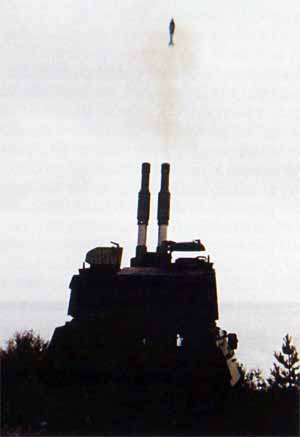 |
 |
 |
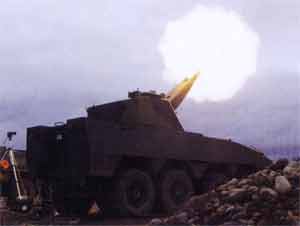 |
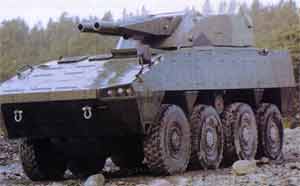 |
 |
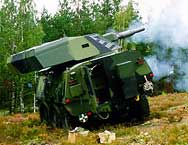 |
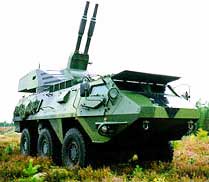 |
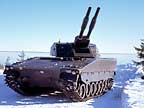 |
 |
 |
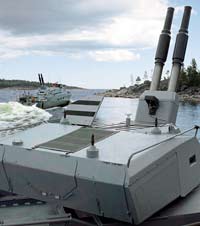 |
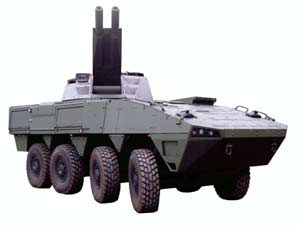 |
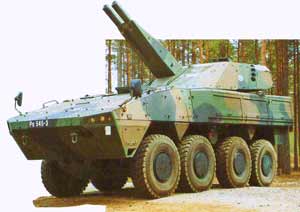 |
